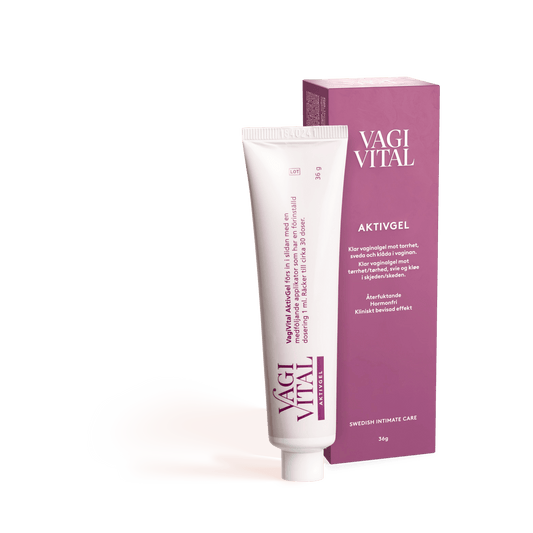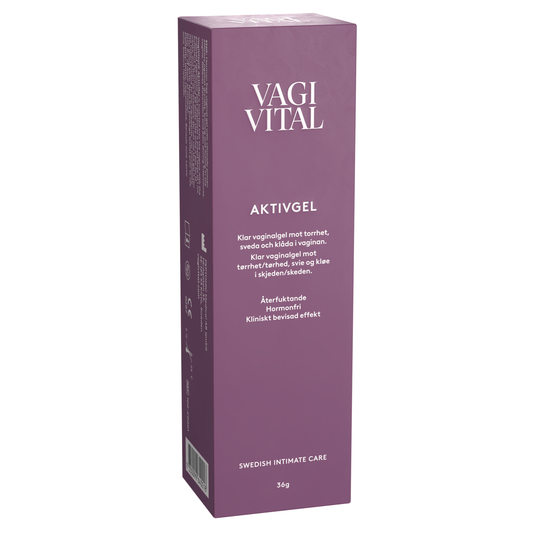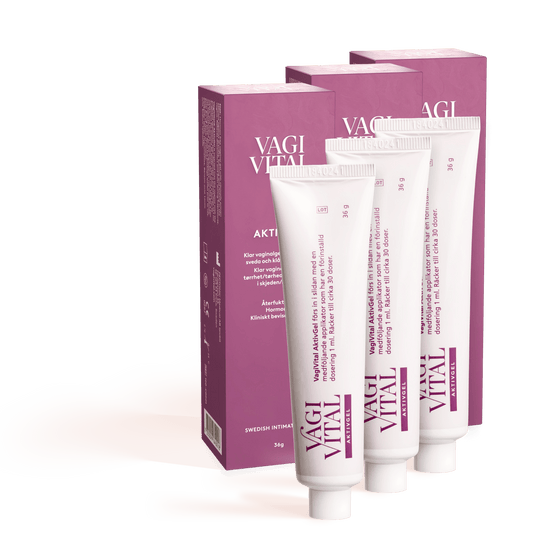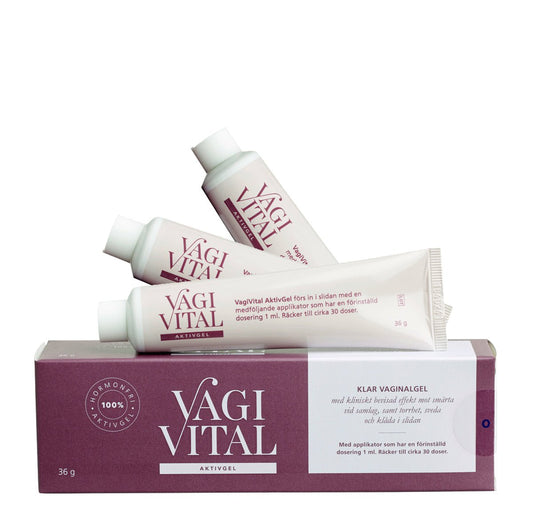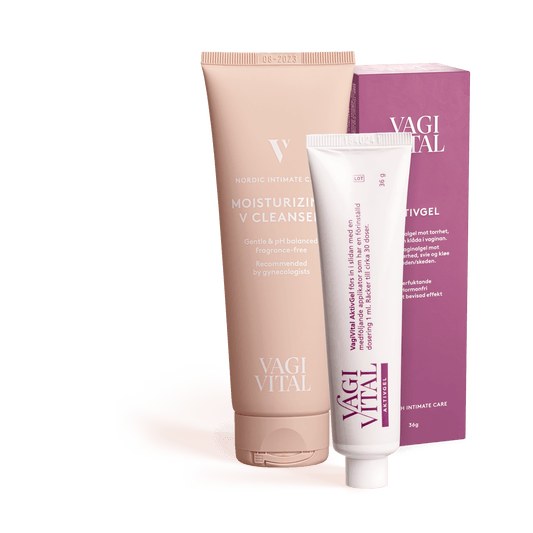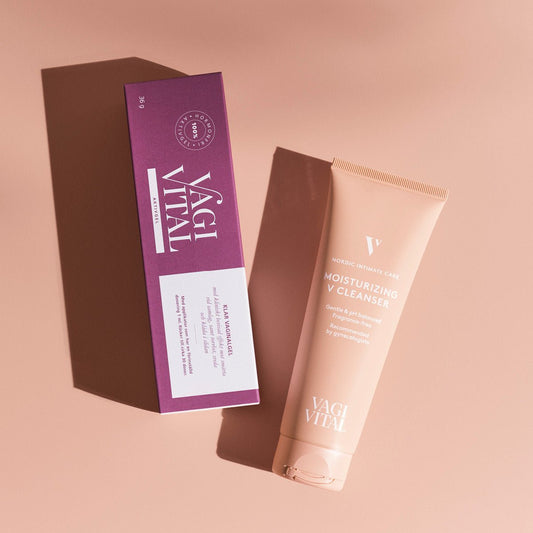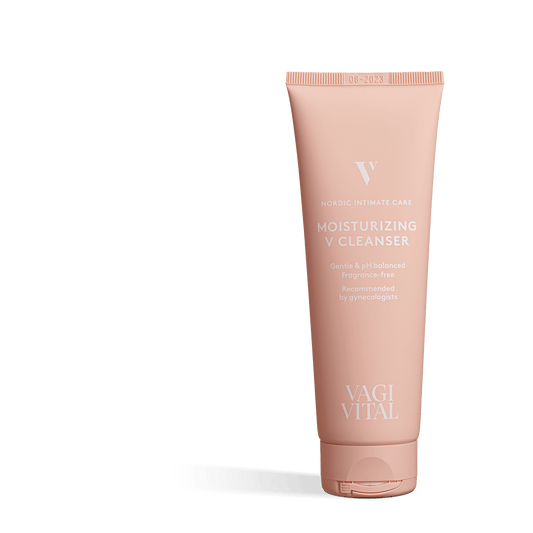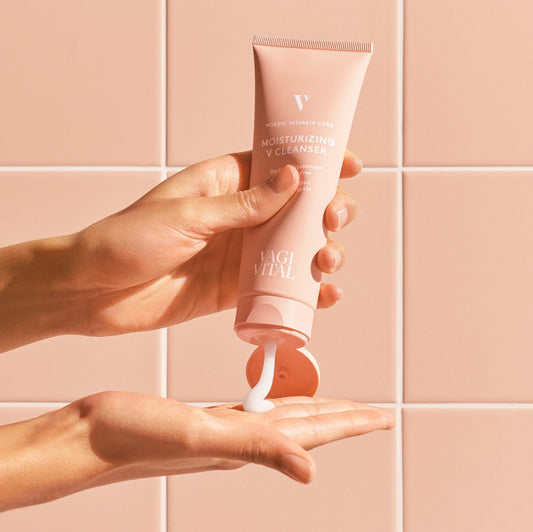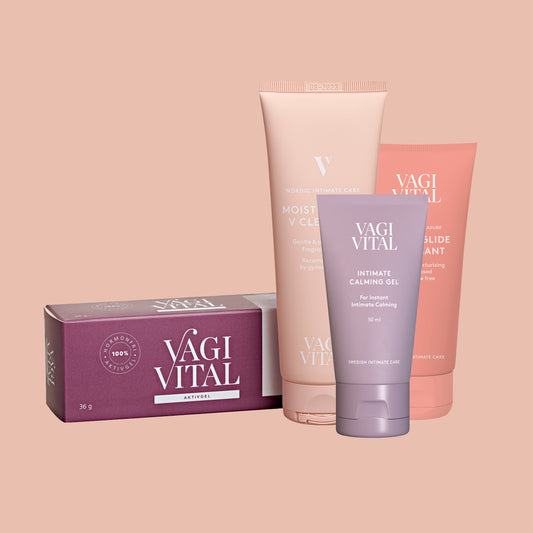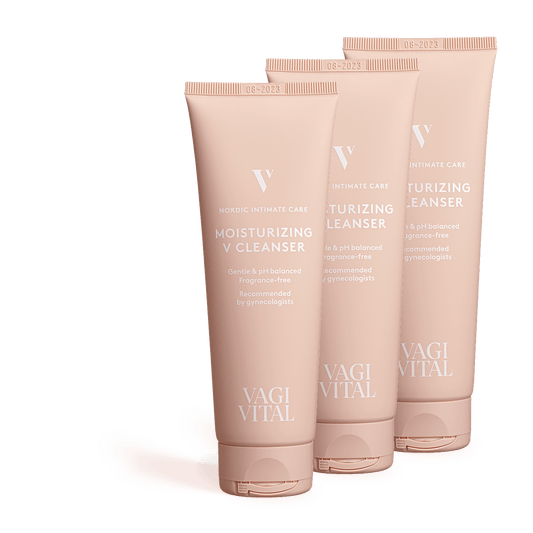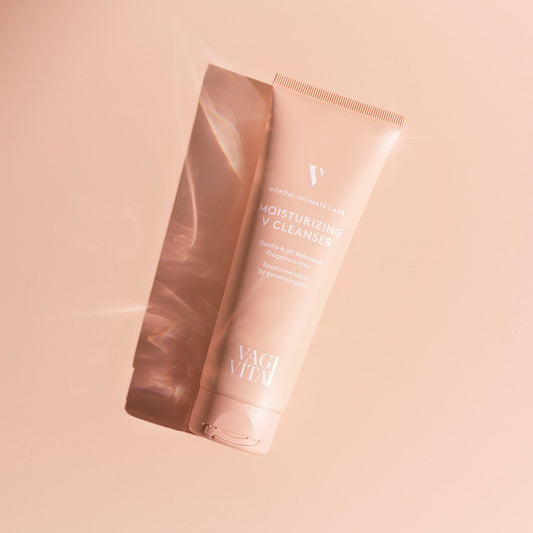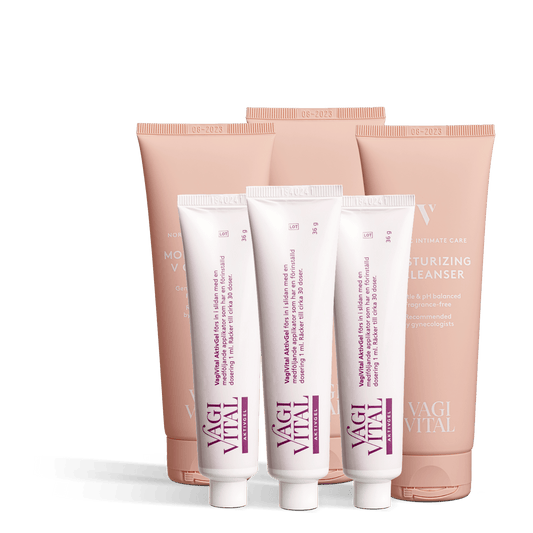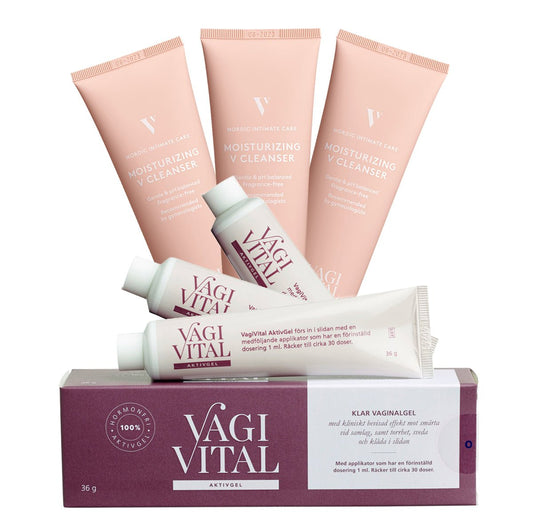Winter weather dries out the skin – and the intimate area
When the temperature drops, it can affect everything from your skin, your hair – and even your intimate area. This is just one of the reasons why you should add a moisturizing gel to your intimate care routine, to protect yourself against vaginal dryness during the winter.
Why does our skin become dry during winter?
To understand how winter weather can lead to dry and irritated skin, we first need a little biology lesson about the skin. The outermost layer of the skin is called the epidermis, and the thin surface of it is called the stratum corneum, which is the outermost of the epidermal layers. This layer consists of a combination of dead skin cells and lipids, which are the skin’s natural fats.
The top barrier of the skin is meant to stop harmful toxins from entering the body and needs moisture to do so effectively. When the skin barrier lacks moisture, it can be damaged, and that’s when you may notice your skin feeling dry or irritated.
During the winter months, the skin struggles to maintain its natural moisture for a variety of reasons. Firstly, the temperature difference leads to a change in humidity, and studies show that there is simply less moisture in the air during winter. Colder temperatures also lead to fewer lipids in our outermost skin layer, which means you get more dead skin cells than natural and moisturizing fats – a recipe for dry skin.
Our daily habits also change when winter comes, and this can lead to dehydrated skin. When it gets colder, we tend to stay indoors with elevated room temperatures and also enjoy more warm baths and showers. This can increase the cozy factor, but studies show that it can damage our already fragile skin.
What does this mean for our intimate area?
When we talk about dry winter skin, we often think of the skin on the face or other parts of the body where we directly notice dryness. But the fact is that all the factors we mentioned above can also affect the intimate area.
Even though your intimate area is not exposed to the elements in the same way as the face, the reduction of lipids within the skin barrier can be felt internally in the same way as externally. It is important to remember that your intimate area is super sensitive – which means hot baths and showers can cause even more damage. You may also notice that other daily habits we tend to adopt during winter – such as wearing leggings or thick tights for warmth – can cause changes in your intimate area. Tight clothing prevents the skin from breathing as well and can trap moisture, something that may sound positive but can actually contribute to yeast infections that cause dryness and itching in the intimate area.
Skincare and beauty experts often recommend a change in skincare routines during the winter months, with a strong focus on moisturizing. The same recommendation can be given for the intimate area! However, your vaginal health is delicate, so it’s not enough to just find a rich or oily cream to apply – you must consider the pH value and, above all, the osmolality of the products you choose.
What is osmolality?
In simple terms, osmolality can be described as a product’s “water-giving” or “water-taking” properties. Time for a little lesson again, now in chemistry…
Osmosis is a process where water molecules are transported through a semi-permeable membrane from an area of high water concentration to a region with low water concentration. This happens because nature constantly seeks balance. Osmosis is how plants absorb water from the soil – it is also how our skin absorbs water from all the creams we use.
The thing is, some products marketed as moisturizing are not really optimized for osmolality. This means that even if the products show a short-term moisturizing effect, it can actually be that water is drawn out of the skin cells instead, leading to dryness in the long run.
Using products with optimized osmolality is especially important when it comes to our intimate health. In the intimate area, osmolality is around 260–290. If you use products with a higher osmolality, it means water is taken from the cells in the vaginal wall instead of absorbing moisture. This can cause vaginal dryness, which is not only uncomfortable but can also lead to increased risks of damage, infections, and pain during intercourse. You also don’t want anything with an osmolality that is too low – this can mean too much water is absorbed and the skin cells are damaged.
How can I avoid dryness in the intimate area?
Just like the skin on the rest of the body, there are many things you can do to protect yourself from vaginal dryness during the winter months. Watch your diet! Sugar and processed foods can create imbalances that lead to dryness. Also, be mindful of how often you wear tight, warm clothing or take hot baths and showers. When it comes to products, one tip is to add a moisturizing gel to your intimate care routine. You can do this year-round but especially when it gets colder.
Make sure the products you use are not only safe for internal use but are also created with pH balance and osmolality in mind. VagiVital Active Gel is based on our clinically proven VV formula that has kept intimate areas healthy and happy since 2009. An optimal osmolality is a key part of our formula, just like a balanced pH value – so you can be sure your intimate area gets all the moisture it needs without any irritation. Read more about our hormone-free active gel here.
Recommended products for you
- Choosing a selection results in a full page refresh.
- Opens in a new window.
